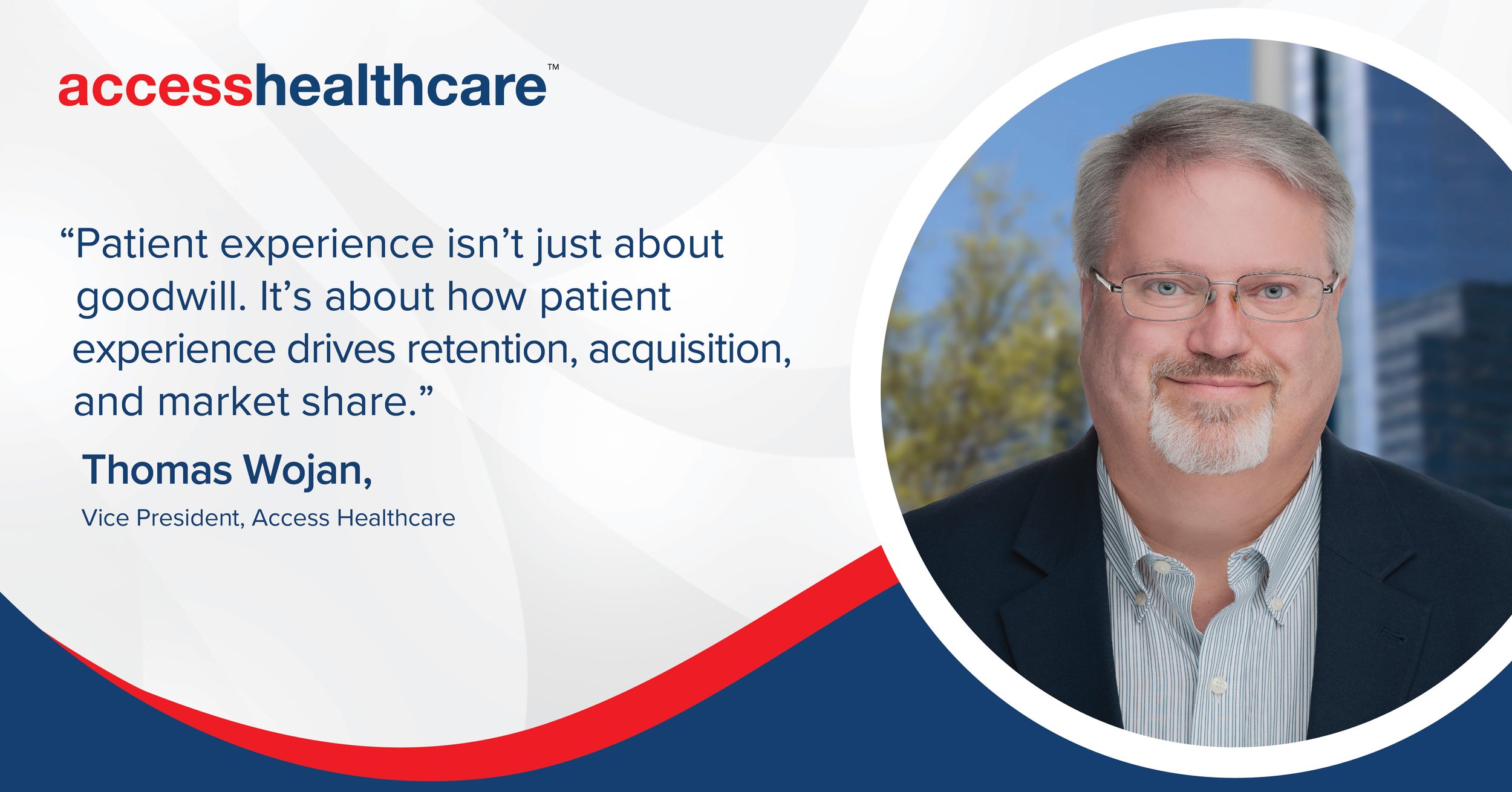Vice President, Access Healthcare
Hospital CFOs excel at dissecting margins, revenue streams, and cost controls. Yet, a powerful lever for both financial performance and reputation often goes underutilized: the patient experience. Why does this matter now? Because the numbers are in, and they’re impossible to ignore. Recent industry surveys show that a majority of healthcare CFOs now rank patient experience among their top growth priorities. Patient experience isn’t just about goodwill. It’s about how patient experience drives retention, acquisition, and market share.
High Consumer Scores Drive Financial Gains
Hospitals in the top quartile for HCAHPS (Hospital Consumer Assessment of Healthcare Providers and Systems) scores consistently achieve net margins more than double those in the bottom quartile. That gap can translate into millions in additional annual revenue. High HCAHPS scores are linked to:
Increased Medicare reimbursements through value-based purchasing (VBP) programs.
Enhanced patient loyalty and reputation, which drives higher patient volumes and referrals.
Direct financial rewards and penalty avoidance, with top-performing hospitals sharing in billions of dollars in value-based payments.
Better Experience = Lower Costs and Less Financial Risk
Recent research makes it clear: hospitals with higher patient experience scores see significantly tangible operational benefits.
Fewer malpractice claims
Reduced employee turnover
Greater efficiency and lower administrative costs
These improvements extend beyond clinical care, directly reducing cost centers such as litigation, recruitment, and the overhead of managing patient complaints and inquiries.
CFOs Must Broaden Their METRICs, Guard Against Blind Spots
Many CFOs recognize the importance of patient experience, but few have integrated dashboards that directly tie experience metrics to financial outcomes. Without this visibility, CFOs risk missing early warning signs that can impact reimbursement, payer scores, and long-term brand equity.
A Medical University of South Carolina report suggested key performance indicators should now include patient experience data alongside traditional financial metrics to provide a holistic view of organizational health.
Experience Is Now Part of Reimbursement Strategy
Programs like Medicare’s Hospital Value-Based Purchasing make patient experience a core part of performance calculations. Hospitals with strong patient satisfaction scores can earn bonus payments, while those with poor scores face penalties that can erode operating margins by several percentage points. Failing to monitor and improve these scores is not just risky—it’s demonstrably costly.
Reframing Patient Experience as a Strategic, Financial Lever
CFOs who embed patient experience into financial strategy can boost revenue, reduce risk, and build operational resilience. Here’s how to better view the blind spot:
Integrate patient experience into financial KPIs: Link satisfaction and HCAHPS data with accounts receivable, denial rates, and value-based reimbursement metrics to drive targeted improvements.
Foster collaboration with C-suite leaders: Break down silos and align incentives between finance, clinical, and front-office teams for a unified, patient-centric approach.
Invest in synergistic tools: Prioritize technologies that enhance both patient experience and efficiency, such as online pre-registration, transparent billing, and responsive call centers89.
Leverage experience data as a business asset: Use analytics to turn patient feedback into actionable insights that inform budgeting, staffing, and long-term planning.
Final Thought
The empirical link between patient experience and financial performance is no longer up for debate; it’s proven. Patient experience should be as central to your financial strategy as payer mix or DSO. CFOs who address this blind spot will not only improve margins, but also build organizations that retain patients, attract top talent, and consistently outperform under value-based care models.
Let’s build something stronger together.
Contact us to explore how our holistic approach to revenue integrity—powered by automation, analytics, and human insight—can support your goals.


